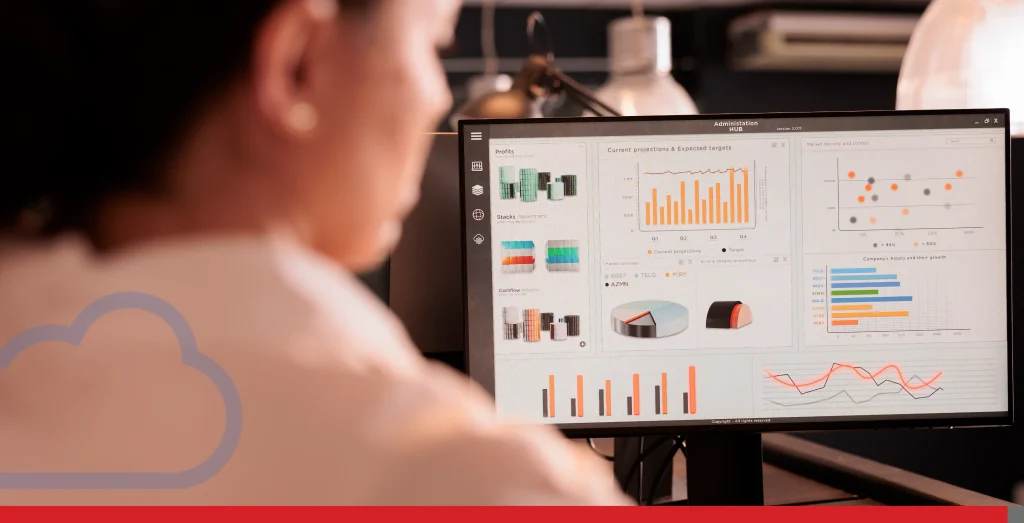So you’re thinking about starting a blog and doing your very first blog post. Awesome choice!
But what exactly is a blog? It’s a regularly updated website filled with content (aka blog posts) that can cover just about any topic under the sun. Simply put, a blog is like your personal corner of the internet where you can share your thoughts, expertise, and experiences with the world in your own space. Yes, an entire blog about what you want!
Why start one? Well, blogging can be an amazing way to express yourself, make some extra cash, build authority in your field, and connect with people who share your interests. Plus, you don’t need a degree in writing or web development to get your personal blog started—literally, anyone can do it.
If this sounds like your plan this 2025, keep reading our step-by-step guide to creating your new successful blog!
- Why Start a Blog in 2025?
- Choosing a Blog Niche
- Creating a Blog Online
- Planning Your Content
- Growing Your Blog Audience
- Tracking & Analyzing Your Blog’s Performance
- Making Money from Blogging

Why Start a Blog in 2025?
Well, before creating your own blog, decide what it will be about, and basically all the tech stuff like your blog hosting or free stock photos; let’s begin by understanding what type of benefits and joys starting a blog could give you.
Remember, blogging isn’t just a fun hobby; it comes with a ton of perks:
- Boost your credibility: Writing informative and engaging blog posts can help you establish authority in your field. As you consistently create content that showcases your expertise, your audience will begin to see you as a thought leader. This credibility can lead to more opportunities, such as speaking engagements, collaborations with other bloggers, or even book deals. Pro tip: To further boost your credibility, add a blog FAQ section in each new blog.
- Attract new clients and opportunities: Whether you want to freelance, sell a product, or land a job, a well-maintained blog can open doors. By demonstrating your skills and knowledge through your blog topic, you can attract potential clients or employers who are impressed by your work. Remember, your blog acts as a portfolio; it showcases your talents and makes it easier for others to see your value!
- Build trust with your audience: Consistently posting high-quality content makes people see you as a reliable source, and it will add more traffic to your site. When your readers know they can lean on you for valuable insights and accurate information, they are more likely to return to your blog and recommend it to others. This trust can translate into a loyal audience that engages with your content.
- Earn money online: Yes! Writing articles and monetizing your blog can turn it into a profitable business through ads, affiliate marketing, courses, and more.

Choosing a Blog Niche
If you’ve decided to create a blog, that’s perfect! Now comes the very big step. What’s it going to be about? You need to pick a niche—aka the main topic of your blog. Having a clear niche helps you stay focused, stand out from the crowd, and attract readers who are genuinely interested in what you have to say. Specific blog posts will attract a specific audience!
Not sure where to start? No worries! Here are some tips to help you land on the perfect niche for your blog:
1. Choose Something You Love
Writing about something you’re passionate about will keep things fun and help you stay motivated. Whether it’s cooking up delicious recipes, exploring hidden hiking trails, or sharing your favourite fashion finds, passion will be the key. All your blog pages will reflect the topics you’re an expert on.
Think about what you could talk about for hours. That’s probably a great niche!
2. See if it’s Profitable
Love is great, but a little cash flow never hurts! Some niches offer better money-making opportunities than others. Yes, you could build a profitable blog if you put a big effort into it. From affiliate marketing and sponsorships to digital products and memberships, the money blogging opportunities are wide! Check out how other bloggers in your niche are making a living, and see how profitable your blog could be.
Pro tip: Google terms like “top earning blogs in [your niche]” to get a sense of the potential.
3. Check the Demand & Competition
A niche without readers is like a concert with no audience. In order to have a successful blog, you’ll want to make sure people are actually interested in what you plan to write about. Use keyword research tools like Google Keyword Planner or Ubersuggest to check how often people search for your topics.
At the same time, scope out the competition. Having competitors means there’s demand, but if a niche is too crowded, it might be tricky to stand out. Aim for a balance, a niche with demand, but still enough room for your unique voice!
4. Get to Know your Audience
Who’s going to read your blog? Knowing your audience will shape how you write, what topics you cover, and how you connect with readers. Think about their age, interests, and what problems they’re trying to solve.
Hang out where your audience does! Join Facebook groups, scroll through Reddit threads, check out popular blogs, and visit that YouTube channel that resonates with your audience. See what your audience is interested in.

Creating a Blog Online
Once you’ve nailed down your niche, it’s time to bring your blog to life. Let’s get started!
Pick a Blog Name & Domain
Your blog name should be catchy, easy to remember, and relevant to your niche. A custom domain name (or even a free domain) will be your blog’s brand identity. Here are a few tips to help you choose the perfect name and domain:
- Keep it short and simple. You want something people can easily type and remember.
- Make sure it’s easy to spell and pronounce. Avoid complicated words or quirky misspellings.
- Consider using .blog or .com for your domain. These are common and easy to recognize.
- Check availability using a domain name search tool. Sites like EasyHosting are great for this!
Make a list of ideas and get feedback from friends or family to see which one sticks! If you’re seriously considering a domain name from scratch, we recommend you read our article Do Domain Name Extensions Impact SEO? Best Practices for 2025 to know the basics before and after creating it.

Choose a Blogging Platform
Next up, you’ll need a blogging platform (also called a CMS—Content Management System) to create your free blog. This is where you’ll design, write, and manage your blog. Here are some top options:
- WordPress.org (self-hosted): Best for long-term success, with tons of flexibility and customization options.
- Wix: Super user-friendly and great for beginners!
- Squarespace: Perfect for visual-based blogs, especially for photographers or designers.
Web Hosting Options
If you already have your desired blogging platform, it’s time to discuss web hosting services. This is like renting space on the internet for your blog. How to find the perfect web hosting provider? Look for a host that offers the following perks:
- Fast load times: No one likes a slow blog!
- Reliable uptime: Make sure your blog is available 24/7.
- Good customer support: Helpful support can be a lifesaver if you run into issues.
- Affordable pricing: Starting out? There are budget-friendly options, too.
There are many web hosting companies, but popular hosting providers like HostPapa are always offering discounts and great deals. Take a look at their Managed WordPress Hosting service, where you can have all these perks in just one package!

Designing Your Blog
Now that your blog is live, it’s time to make it look amazing! Your blog’s design or WordPress theme is the first thing people see, so you’ll want it to reflect your personality and niche.
No need to be a design pro—most platforms offer tons of blog templates and themes to get you started. But besides the theme, keep in mind the specific design elements that will make your blog stand out by adding personal touches!
- Create a logo: A simple, stylish logo helps people remember your brand. Take advantage of EasyHosting’s logo design service to get ahead of your competition effortlessly. It’s as easy as emailing us!
- Choose a colour scheme: Pick colours that match your vibe. Many sites offer free colour palette tools if you’re stuck.
- Pick easy-to-read fonts: Keep your fonts clear and readable.
- Make it user-friendly: Keep navigation simple, add a search bar, and ensure your blog looks great on mobile. Also, use relevant images that can complement your content visually!
Pro tip: Test your design by asking friends or family for feedback on your WordPress site. If they can find what they need easily, you’re good to go!

Planning Your Content
Consistency is pivotal. A content calendar helps you stay on track by planning posts in advance.
Google Sheets, Trello, or Notion can be great tools for this, and they’re completely free! A content calendar helps you stay on track by planning posts, ensuring you consistently create content that engages your audience.
When you brainstorm blog topics for your new blog posts, consider the following:
- Your experience in the topic.
- Common questions your audience may have on the topic.
- Trending topics in your niche.
Writing Your First Blog Post
Your first post will set the tone for your blog, so make it valuable and engaging by writing blog posts that resonate with your audience. Make each article valuable and engaging by:
- Doing keyword research to find what people are searching for.
- Write a compelling headline to grab attention.
- Structure your post well (use subheadings, bullet points, images).
Inserting Images & Editing
Visual appeal and readability are crucial for engaging blog posts. Here’s how to effectively use relevant images in your content:
- Optimize your images: Compress images to improve your blog’s loading speed. Tools like TinyPNG can help reduce file sizes without compromising quality.
- Use alt tags on images: Alt tags describe your images to search engines, improving your blog’s SEO. Make sure to include relevant keywords in your alt tags! If you’re unsure about which keywords are the best fit for your blogs, try using a Search Engine Optimization tool like Semrush or even the Google Search Console.
- Edit your images: Use free tools like Canva to enhance your images. Consistent styling and branding can make your blog look more professional.

Growing Your Blog Audience
As you embark on this blogging voyage, expanding your reach and connecting with a broader audience becomes important for the success of your blog. Growing your blog audience involves strategic actions that go beyond just creating content. Let’s explore them before you hit publish!
Social Media Advertising
With just a few clicks, you can share your posts on platforms like Instagram, Twitter, Facebook, LinkedIn, and also on Google through Google Adsense. Social media is a mighty tool for expanding your blog’s reach and engaging with a broader audience.
To maximize your impact, tailor your content to each platform’s unique characteristics. For instance, use visually appealing images or short videos on Instagram, engage in trending conversations on Twitter, and join relevant groups or pages on Facebook. This strategy will make any blog successful.
Guest Blogging
Writing for other blogs brings exposure and backlinks. Look for websites in your niche that accept guest posts; this will create organic traffic. Guest blogging is an excellent strategy for building your blog’s authority and reaching new audiences.
When pitching guest post ideas, ensure they align with the host blog’s audience and provide unique insights or perspectives. This collaboration can also lead to long-term relationships with other bloggers, opening doors for future partnerships or co-marketing opportunities!
Email Marketing
Building an email list enables you to stay connected with readers. Email marketing remains one of the most effective ways to nurture relationships with your audience and drive traffic back to your blog.
By offering helpful content directly to your subscribers’ inboxes, you can keep them engaged and informed about your latest blog posts, updates, and promotions.
Pro tip: Consider segmenting your email list based on subscribers’ interests or behaviours to deliver more personalized content.

Tracking & Analyzing Your Blog’s Performance
To continually improve your blog, you need to track and analyze its performance. Here’s how to do it effectively:
- Use Google Analytics: Google Analytics is a powerful tool for tracking your blog’s performance. It provides insights into your traffic sources, user behaviour, and more.
- Use social media analytics: Platforms like Facebook, Twitter, and Instagram offer analytics tools that can help you understand how your content is performing on social media.
- Track your email open rates: If you’re using email marketing, track your open rates and click-through rates to gauge the effectiveness of your campaigns.
- Analyze comments and feedback: Regularly review comments and feedback from your readers. This can provide valuable insights into what your audience likes and dislikes, helping you refine your content strategy.
Making Money from Blogging
There are many ways to actually have an economic gain from blogging. Here are the most common ones, and they help even the ones who are just starting.
- Freelancing: Offer writing, design, or consulting services through your blog. By showcasing your skills and expertise through your blog content, you can attract potential clients who are interested in hiring you for freelance work. Whether you’re a talented writer, a skilled graphic designer, or a knowledgeable consultant, your blog can act as a portfolio that demonstrates your capabilities. Additionally, consider creating a dedicated services page on your blog where you outline the services you offer, your rates, and how potential clients can get in touch with you.
- Affiliate marketing: Promote products and earn commissions! Affiliate marketing involves recommending products or services to your audience and earning a commission for every sale made through your referral links. To succeed in affiliate marketing, focus on promoting products that align with your blog’s niche and that you genuinely believe in.
- Selling courses and products: If you have expertise, package it into online courses or an eBook. Creating and selling digital products, such as online courses or eBooks, allows you to monetize your knowledge and provide valuable resources to your audience. Start by identifying topics that your readers are interested in and that you have in-depth knowledge of. Develop comprehensive and engaging content that addresses their needs and helps them achieve their goals.
Conclusion
Starting a blog is more painless than ever, and the potential rewards are huge. Pick a niche, set up your site, make great content, and promote it. Stay consistent, keep learning, and you can turn your blog into something amazing.
As you undertake your blogging journey, remember that persistence and adaptability are key. The digital landscape is ever-evolving, and staying current with trends and technologies will give you an edge.
Engage with your audience through comments and social media to build a community around your blog. This interaction not only fosters loyalty but also provides valuable feedback to improve your content.
Happy blogging!
If you want to start a blog today and do it in the most professional way, we’ll be glad to provide expert digital marketing services for you, from SEO, domain services, and, of course, a website builder with tons of themes to choose from.
Give us a call or send us an email if you want to start a new chapter for your website with EasyHosting.
support@easyhosting.com
Call us: 1-888-390-1210
FREQUENTLY ASKED QUESTIONS
How much does it cost to start a blog?
It can be free as long as you want. You can start a blog for free using platforms like WordPress.com or Blogger, but investing in a web hosting plan or a Website Builder with a custom domain can give you more control and a professional appearance.
Additional costs may include premium themes, plugins, and marketing tools, which can enrich your blog’s functionality and reach.
How long before I make money?
It depends on effort and strategy, but most bloggers start earning within 6-12 months. Monetization through social media can help you start earning within 6-12 months.
Your income potential increases as you build your audience and diversify your income streams through your blog theme. Consider exploring affiliate marketing, sponsored posts, and digital products to maximize your earnings.
Do I need to be a good writer?
(Grammatically), not at all! Blogging is more about clear, engaging communication than perfect grammar. Focus on delivering valuable content that resonates with your audience. Use tools like Grammarly to help with editing, and don’t hesitate to experiment with different writing styles and formats to find what works best for you.
Can I start a blog in Canada and reach an international audience?
Absolutely! The internet has no borders—your audience can be anywhere. By optimizing your blog for search engines and leveraging social media, you can attract readers from around the world. Consider writing in English or other widely spoken languages to broaden your reach and engage with international communities to build a diverse audience.
Should I blog as a side hustle or a full-time business?
Start as a side hustle. If it takes off, you can transition to full-time blogging. Begin by dedicating a few hours each week to creating content and promoting your blog. As your blog gains traction and generates income, assess whether it can support you financially. A gradual transition allows you to manage risks and build a sustainable blogging business.



